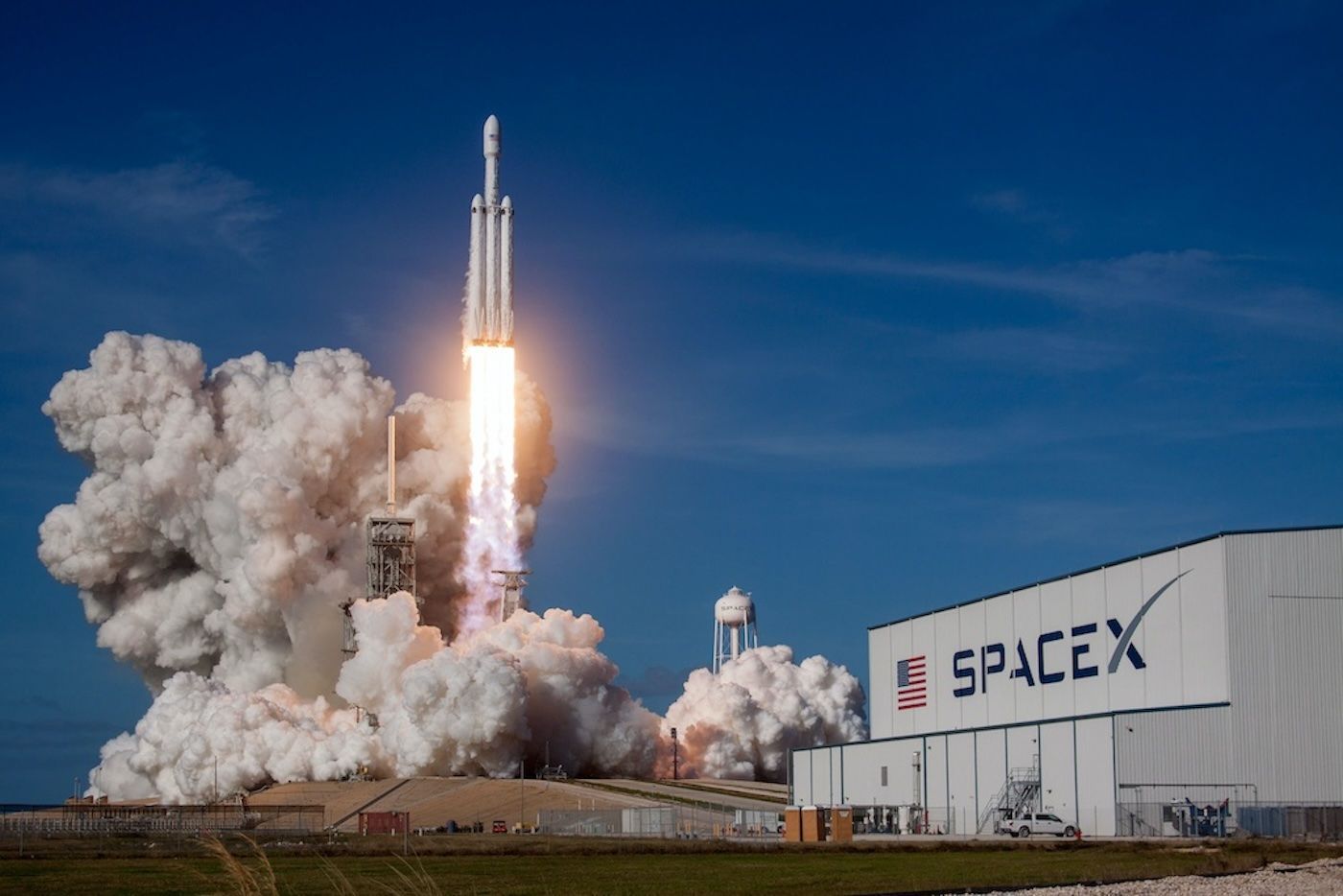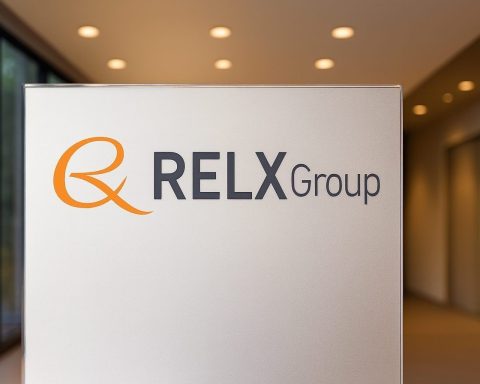- No Public Stock (Yet): SpaceX remains a private company in 2025, so individual investors cannot buy SpaceX shares on the stock market [1]. Direct investment is limited to private funding rounds or secondary markets for accredited investors.
- Indirect Investment Routes: You can gain exposure to SpaceX indirectly. Several public funds and trusts hold SpaceX in their portfolios, including ETFs and mutual funds like ERShares XOVR, ARK Venture Fund, Baron Partners Fund, and others [2] [3]. These offer a backdoor way for retail investors to ride SpaceX’s growth story.
- Major Backers: Elon Musk is SpaceX’s largest shareholder (~42% ownership as of 2025) [4]. Other major investors include tech giants and top VCs: Alphabet/Google (invested $900 M in 2015) [5], Fidelity Investments (via its funds) [6], plus venture firms like Andreessen Horowitz (a16z), Sequoia Capital, Founders Fund, DFJ, Valor Equity, and more [7] [8]. These deep-pocketed stakeholders underscore strong institutional confidence in SpaceX.
- Sky-High Valuation: SpaceX’s valuation has skyrocketed. It was valued around $150 B in 2023 [9], jumped to ~$350 B by late 2024 [10], and latest secondary share talks in 2025 imply a valuation near $400 B [11] – making SpaceX one of the world’s most valuable private companies. Investors are betting on SpaceX’s dominant position in rockets and satellites to justify this hefty price tag.
- IPO Plans & Starlink Spin-off: Despite rampant speculation, SpaceX has no official IPO date as of October 2025 [12]. Elon Musk and President Gwynne Shotwell have hinted they’re in “no rush” – Musk said he’s given “zero” thought to a Starlink IPO until the business is more mature [13]. Analysts do anticipate that Starlink, SpaceX’s satellite internet arm, could be spun off or go public by 2025–2026 [14], but Musk insists an IPO won’t happen until the company’s long-term goals (like Mars missions) are better realized [15].
- Recent Strategic Moves: SpaceX is doubling down on its telecom ambitions. In September 2025 it struck a $17 B deal to buy wireless spectrum from EchoStar, aiming to power Starlink’s new “direct-to-cell” service that beams connectivity straight to regular phones [16] [17]. This massive investment (paid half in cash, half in stock) positions SpaceX to eliminate mobile dead zones globally and disrupt terrestrial cell carriers. It’s a bold strategic bet underscoring SpaceX’s growth beyond rockets into a broader space-and-telecom empire.
- What the Experts Say: Long-term investors are bullish. Venture legend Ron Baron (an early SpaceX backer) projects SpaceX could be worth $500 B by 2030 [18] and calls its potential “otherworldly.” The managers of Scotland’s famed Scottish Mortgage Investment Trust — which counts SpaceX as a top holding — describe SpaceX as “one of the most important geopolitical assets in the world” [19], citing its dominant satellite network (Starlink now makes up an estimated 78% of all active satellites in orbit) [20]. Analysts emphasize that SpaceX’s unique combo of reusable rockets + recurring telecom revenue is reshaping entire industries, which could translate into enormous future earnings.
- Growth Outlook: SpaceX’s financial trajectory is as rapid as its rockets. Elon Musk revealed that SpaceX is on track for $15+ B in revenue in 2025 [21] – a staggering leap fueled by a record launch cadence (170 missions targeted in 2025) [22] and surging Starlink subscriptions. Starlink hit cash-flow breakeven in late 2023 [23] and now serves millions of customers worldwide, providing a high-margin subscription stream to complement SpaceX’s launch and spacecraft contracts. With NASA and the U.S. Department of Defense signing multibillion-dollar agreements for missions, SpaceX enjoys a backlog of business that most startups can only dream of [24]. All this underpins forecasts of continued exponential growth – and a valuation that could climb even higher if milestones like Starship (the Mars-class rocket) unlock new markets in space tourism, lunar transport, and beyond.
- Opportunities vs. Risks: Investing in SpaceX (even indirectly) offers tremendous upside but not without significant risks. Opportunities: SpaceX has a dominant first-mover advantage in commercial space – its Falcon rockets fly more often (and cheaper) than any competitor, and Starlink gives it recurring revenue rare in aerospace [25]. The company’s technological moat (reusable boosters, satellite mass-production) and hefty government contracts [26] provide a degree of earnings visibility and market stability that bolster its investment case. If and when SpaceX or Starlink eventually goes public, early investors could see substantial gains if public markets assign even loftier multiples to this “new space” leader. Risks: However, SpaceX’s ~$400 B valuation assumes flawless execution. The company faces steep technical and financial challenges – for example, the Starship program (key to future growth) has seen high-profile test failures and delays, and will require enormous capital investment to succeed. There’s also liquidity risk: as a private entity, SpaceX stock is hard to buy or sell – investors are largely locked in until a liquidity event (IPO or secondary sale) occurs. Those indirect funds offer some liquidity, but their SpaceX stakes are subject to periodic revaluations (Fidelity’s Contrafund, for instance, marked its SpaceX holdings at $2.7 B in late 2024, making SpaceX its 11th-largest position) [27]. Competitive and regulatory risks bear mention too – rivals like Blue Origin and Amazon’s Kuiper are racing to catch up in rockets and broadband, and SpaceX’s global Starlink operations have occasionally raised geopolitical concerns (e.g. scrutiny over foreign investors or the network’s role in conflicts) [28]. Finally, because Musk runs SpaceX with a long-term, Mars-driven vision, there’s the risk that traditional profit metrics take a back seat; public shareholders might not get a say until Musk is confident external pressures won’t derail SpaceX’s mission [29].
Investing in SpaceX: Full Report
Can You Invest in SpaceX in 2025?
SpaceX is not publicly traded. In 2025, individual investors cannot buy SpaceX stock on any stock exchange – the company remains private and majority-owned by Elon Musk and early backers [30]. Unlike Tesla, which went public in 2010, SpaceX has stayed closely held. Musk has long argued that remaining private allows SpaceX to focus on audacious long-term goals (like colonizing Mars) without the short-term pressures of quarterly earnings and public market scrutiny [31]. As he put it, taking SpaceX public too soon could “change its fundamental mission to Mars into a mission for profits,” so he prefers to delay an IPO [32]. SpaceX’s President Gwynne Shotwell has even quipped that SpaceX won’t go public until they’re “regularly flying to Mars”, underscoring the leadership’s stance [33].
For everyday investors, this means no direct way to own a piece of SpaceX (at least not yet). The only people who hold actual SpaceX shares are insiders (like Musk, employees, and venture capital funds) or wealthy private investors who participated in private funding rounds. SpaceX does occasionally facilitate secondary sales – essentially allowing existing shareholders to sell some of their private stock to other pre-approved investors – but these deals are typically limited to large institutions or accredited investors and are not accessible to the general public [34]. In fact, SpaceX has run regular insider share tender offers (roughly every 6 months in the past) so employees and early investors can cash out a portion without an IPO [35]. These private liquidity events, while helpful for insiders, still exclude retail investors.
Bottom line: If you’re a retail investor in 2025, you cannot buy SpaceX shares outright like you would Apple or Tesla. Any website or person implying otherwise is likely selling illegitimate shares or engaging in speculation. Until SpaceX chooses to IPO or gets acquired (neither of which is on the near-term horizon), direct investment is off the table for individuals.
However, all is not lost for those eager to invest in SpaceX’s future. There are indirect avenues to get exposure, which we cover next.
Indirect Ways to Invest in SpaceX (ETFs, Funds, and Trusts)
While you can’t buy SpaceX stock directly, savvy investors have found backdoor ways to ride SpaceX’s growth. A handful of publicly-traded funds and investment vehicles have acquired stakes in SpaceX through private funding rounds – meaning you can buy those funds and indirectly share in SpaceX’s gains. Here are some of the prominent options:
- ERShares Crossover ETF (Ticker: XOVR): This exchange-traded fund specializes in innovative private companies. As of late 2024, XOVR had about 12.3% of its assets allocated to SpaceX [36]. That’s a significant weighting – over a tenth of the fund – making XOVR one of the purest SpaceX plays available to retail investors. XOVR blends public and private holdings, so by buying its shares (available on regular stock markets), an investor gets a slice of SpaceX alongside other high-growth companies [37].
- ARK Venture Fund (ARKVX): Run by Cathie Wood’s ARK Invest, this closed-end fund (traded like a mutual fund/ETF hybrid) focuses on private tech “disruptors.” SpaceX is actually ARK Venture’s single largest holding (≈12.4% of the fund) [38]. ARK’s team has been vocal about SpaceX’s transformative potential in space and telecom. By investing in ARKVX (which some brokerages offer to retail clients), you indirectly own a chunk of SpaceX alongside other privately-held innovators in ARK’s portfolio.
- Baron Partners Fund (BPTRX): This is a long-running mutual fund managed by Ron Baron’s firm, known for its early bets on Tesla and SpaceX. Baron Partners Fund has an estimated 13% of its assets in SpaceX [39]. Ron Baron himself has invested over $1 billion in SpaceX via his funds over the years [40]. He’s extremely bullish – predicting SpaceX’s valuation could reach $500 billion by 2030 [41]. Buying into BPTRX (available through Baron Funds or brokers) gives you exposure to SpaceX, though keep in mind the fund also holds other stocks like Tesla.
- Scottish Mortgage Investment Trust (SMT/LSE): For international investors, Scottish Mortgage, a UK-listed investment trust, is noteworthy. Managed by Baillie Gifford, SMT has been an early SpaceX investor and as of 2025 SpaceX became its #1 holding by contribution to returns [42]. The trust’s managers call SpaceX “one of the most important geopolitical assets in the world” [43] and have eagerly increased their stake over time. By buying shares of SMT (traded on the London Stock Exchange), investors indirectly hold SpaceX along with other high-growth private firms.
- Other Funds: A few other vehicles have smaller SpaceX stakes. For example, Fidelity’s Contrafund (FCNTX) – a popular $160 billion mutual fund – invested in SpaceX back in 2015. Thanks to SpaceX’s valuation surge, by end of 2024 Fidelity’s SpaceX stake had swelled to $2.7 billion, making SpaceX the 11th-largest holding in Contrafund [44]. That’s remarkable considering Contrafund mainly holds blue-chip public stocks. Additionally, newer specialty funds like Destiny Technology 100 (DXYZ), a closed-end fund, reportedly put as much as 30–40% of their portfolio into SpaceX-related holdings [45] – though such concentrated funds can be illiquid and risky. Lastly, some broad index ETFs (e.g., those tracking private equity or crossover indexes) might have tiny indirect exposure, but the percentage is usually negligible.
Practical steps: If you decide to invest indirectly, do your homework on the fund’s strategy, fees, and liquidity. An ETF like XOVR can be bought and sold easily on stock exchanges. Mutual funds like Baron or Fidelity have daily liquidity but may have higher fees or minimums. Closed-end funds (ARKVX, Destiny) might trade at premiums or discounts to their underlying value and could have lock-up periods or limited windows for purchase. Always ensure the fund’s SpaceX allocation aligns with your risk tolerance – e.g. 12% exposure (ARKVX) vs 3-5% in a broader fund.
Also, note that Alphabet (Google’s parent company) owns a piece of SpaceX from a 2015 investment [46]. However, buying Alphabet stock for SpaceX exposure isn’t very effective – Google’s stake, while valued in the billions, is only a small fraction of Alphabet’s $1+ trillion market cap (roughly ~1-2% of Alphabet’s value) [47]. So Alphabet’s share price won’t move noticeably based on SpaceX’s fortunes alone [48]. The dedicated funds listed above provide a more direct correlation.
In summary, indirect investment is feasible: by purchasing shares of certain funds or trusts, regular investors can participate in SpaceX’s growth story vicariously. This is currently the clearest “actionable” path for a SpaceX-enthusiast investor until an IPO or other public offering occurs.
Who Owns SpaceX? Major Investors and Stakeholders
SpaceX’s ownership is concentrated among its founder and a cadre of venture capital, private equity, and institutional investors that have bought in over multiple funding rounds. Here’s a breakdown of the major current investors in SpaceX:
- Elon Musk – The Chief Stakeholder: Elon Musk is SpaceX’s CEO, but also its largest shareholder. As of 2025, Musk holds roughly 42% of SpaceX’s equity (and an even higher percentage of voting control) via a trust [49]. This was reported based on FCC filings and recent share counts, and reflects Musk’s dominance in decision-making. (Earlier filings in 2016 showed Musk owning 54% then [50], but SpaceX has raised capital since, diluting his stake to the low-40s% range.) Musk’s nearly half-ownership means his interests are closely aligned with the company’s success – but it also means external investors have to be comfortable with Musk’s outsized control and vision.
- Early VC Backers: SpaceX has been a venture capital magnet. Founders Fund (led by Peter Thiel) was one of the earliest backers and has invested in multiple rounds, providing crucial funding during SpaceX’s formative years [51]. Draper Fisher Jurvetson (DFJ) and Valor Equity Partners also joined early on [52], as did Capricorn Investment Group (linked to Jeff Skoll) – all recognizing the potential of Musk’s rocket plans when few did. These VC firms typically acquired equity in the mid-2000s and some have held on through today, while others partially exited in later rounds.
- Tech Titans – Google/Alphabet: In January 2015, Google (now Alphabet) made headlines by investing $900 million into SpaceX, alongside Fidelity, in a Series F round [53]. In exchange, Google and Fidelity together received about 8.33% of SpaceX at the time [54]. This stake gave Google a foothold in satellite broadband (synergistic with Google’s interest in global internet access). While Google’s percentage has since been diluted by subsequent funding, it remains a notable shareholder – Alphabet’s stake, at last report, was estimated around 7–8% (worth tens of billions given SpaceX’s valuation). Google hasn’t publicly sold those shares as of 2025, implying they’re in it for the long term. (Interestingly, Alphabet recently disclosed an ~$8 billion unrealized gain on its SpaceX investment when SpaceX’s valuation hit $350 billion [55].)
- Fidelity Investments: Alongside Google in 2015, Fidelity (one of the largest asset managers) injected capital into SpaceX and has continued to participate in later rounds [56]. Fidelity holds SpaceX across multiple mutual funds (e.g., Contrafund, Growth Company Fund). By end of 2024, Fidelity’s various funds valued their combined SpaceX holdings at $2.7 billion+ [57] [58]. Fidelity’s involvement is a strong endorsement from the public markets side, indicating trust in SpaceX’s growth; it also provides an avenue for ordinary investors (through those funds) to indirectly share in SpaceX’s success.
- Andreessen Horowitz (a16z): The Silicon Valley VC powerhouse a16z led a major $750 million SpaceX funding round in early 2023 [59]. This marked a high-profile tech investor doubling down on SpaceX’s Starlink and launch expansions. A16z’s bet signaled that space/telecom is very much in scope for venture returns. They joined SpaceX’s board and are presumably among the top cap table names after Musk, Google, and Fidelity.
- Sequoia Capital: Another top-tier VC, Sequoia, took part in a late 2020 round (when SpaceX was around $40–$50 billion valuation) and possibly subsequent raises [60]. Sequoia’s involvement underscores that SpaceX, by the 2020s, was seen not just as an aerospace company but as a tech platform with massive upside (justifying interest from software-centric VCs).
- Other Notable Investors: SpaceX’s investor list reads like a “who’s who” of global finance:
- Mirae Asset – a large South Korean financial group, co-led a $1.68 B round in 2022 [61], reflecting international confidence in SpaceX.
- Legendary Ventures – participated in the $1.9 B Series J round (2020) [62].
- Coatue Management – a tech-focused hedge fund that has invested in SpaceX [63].
- Baillie Gifford – the Scottish firm behind Scottish Mortgage Trust; they’ve invested privately outside the trust as well [64].
- Stack Capital – a Canadian investment company that publicly trades and holds a piece of SpaceX [65].
- Bank of America and Ontario Teachers’ Pension Plan (OTPP) – major institutional investors that have reportedly joined funding rounds [66], illustrating interest from more traditional finance sectors (a big bank and a large pension fund).
- Valor Equity, Manhattan Venture Partners, Gigafund, and others – SpaceX has done over 30 funding rounds [67], so numerous family offices and smaller VC firms have taken part over the years. Gigafund, for instance, was founded by ex-Founders Fund partners specifically to focus on SpaceX and similar long-horizon investments.
It’s worth noting that no outside shareholder (besides Musk) owns anywhere near a controlling stake. In fact, no single investor aside from Musk holds >10% of SpaceX as of the last disclosures [68]. This means control is not fragmented – Elon Musk’s trust retains majority voting power (reportedly about 78% of voting rights) [69], ensuring he calls the shots. For other investors, this structure has been acceptable because SpaceX’s track record has rewarded them handsomely (e.g., valuation up from $12 B in 2015 to ~$400 B in 2025).
Implication for would-be investors: The roster of SpaceX’s backers is impressive and adds credibility – when you see blue-chip firms like Google, Fidelity, a16z, Sequoia, and top pension funds investing, it suggests they believe in SpaceX’s future and have done due diligence. However, keep in mind these investors got in at various earlier stages (with far lower valuations). Today’s prospective investors – say via a fund or any future IPO – would be buying in at a much higher valuation, which changes the risk-reward profile.
2025 Developments: Funding News, IPO Rumors, and Strategy Moves
The year 2025 has been eventful for SpaceX on the capital and strategy front, even without a public listing. Here are the key developments up to October 2025:
- Massive New Funding Round (~$400 B Valuation): SpaceX has continued raising money to fuel its projects. In mid-2025, reports emerged that SpaceX was in advanced talks for a new funding round (a mix of primary equity and secondary share sale) valuing the company around $400 billion [70]. This deal, if finalized, would cement SpaceX’s status as the world’s most valuable private startup (even above ByteDance and Stripe). By July 2025, Bloomberg and Reuters reported that SpaceX was planning an insider share sale at ~$400 B [71], and sources indicated strong institutional appetite. The structure — allowing existing investors to cash out some shares while letting new investors in — is a way to raise capital without an IPO. TechFundingNews noted the round was likely to be “heavily oversubscribed” given SpaceX’s prestige [72]. As of early October 2025, industry chatter suggests this raise is nearing completion, injecting billions in fresh cash for SpaceX’s grand plans (like Starship, Starlink expansion, and possibly acquisitions) while providing liquidity to longtime shareholders.
- No IPO Until…? On the public offering front, nothing official has been announced. By April 2025, speculation reached a fever pitch that SpaceX might spin off Starlink or go public soon, but Musk promptly threw cold water on it. He stated SpaceX has “zero thoughts” about a Starlink IPO in the near term, emphasizing “we need to make the thing work” first [73]. In other words, Musk wants Starlink to achieve predictable cash flow and stability before opening it up to public investors. Previously, Shotwell had floated the idea of a Starlink IPO back in 2020, but Musk overrode that, and indeed in 2023 he reiterated that Starlink’s IPO was not happening in 2024 and any talk of 2025–2026 was just speculation [74]. Nevertheless, many analysts suspect 2025 or 2026 could finally see some movement on a Starlink spinoff [75] – especially now that Starlink is at scale (5,000+ satellites and millions of users). Musk has acknowledged that Starlink will go public eventually [76], but he’s in no rush. For the core SpaceX (rockets) business, Musk has quipped it might stay private “until we’re regularly flying to Mars” [77], implying no IPO for SpaceX itself in the foreseeable future.
- Starlink’s Big Play – EchoStar Spectrum Acquisition: A huge strategic development came in September 2025. SpaceX announced a deal to purchase wireless spectrum licenses from EchoStar (a satellite communications company) for $17 billion [78]. This is a massive investment aimed at turbocharging Starlink’s new “Direct-to-Cell” service. Essentially, SpaceX is buying up rights to certain frequency bands (the 2 GHz spectrum, including AWS-4 and H-block licenses) that will let Starlink satellites communicate directly with everyday smartphones on Earth [79]. With this spectrum, SpaceX plans to launch upgraded Starlink satellites with lasers and cellular antennas – effectively creating “space-based cell towers.” Gwynne Shotwell said the goal is to “end mobile dead zones around the world”, enabling coverage “wherever [customers] are in the world” via satellite-to-phone links [80]. The EchoStar deal is half cash, half stock (SpaceX will pay ~$8.5 B in cash and give EchoStar ~$8.5 B in SpaceX equity) [81]. It also involves partnering with EchoStar’s Boost Mobile to provide satellite service to Boost customers [82]. The FCC has praised the deal as a way to “supercharge competition” in connectivity by marrying satellite and terrestrial networks [83]. For SpaceX, this is a bold move that signals telecom services will be a core pillar of its business going forward. It leverages SpaceX’s satellite fleet to compete with traditional cellular networks, potentially tapping into a huge market (global mobile users). From an investment standpoint, it’s a long-term bet (it’ll take time and money to deploy the needed satellites), but if successful, it could open a massive new revenue stream for SpaceX, beyond selling dishes to rural broadband users – now they’ll aim to serve every phone user who wanders out of coverage. Notably, this $17 B outlay also shows SpaceX is not capital-constrained: they can undertake one of the largest spectrum purchases ever, reflecting the deep coffers they’ve built through fundraising and Starlink’s growth.
- Financial Trajectory & Profitability: In 2025, SpaceX has given rare peeks into its financials. Elon Musk posted on X that SpaceX will roughly hit $15.5 billion in revenue in 2025 [84]. This is up from an estimated ~$9–10 billion in 2023 [85] – tremendous growth year-over-year. The revenue mix includes launch services (for NASA, DoD, and commercial satellite customers), Starlink subscription fees, and other projects. Importantly, Musk also revealed that by late 2023 Starlink achieved cash-flow breakeven [86], meaning the satellite internet arm is no longer a money sink but is covering its costs and potentially contributing to profit. This is a significant milestone given the heavy investment poured into Starlink’s constellation. It strengthens the case for a future Starlink IPO, since a cash-flow-positive business is more attractive to investors. Additionally, SpaceX’s launch business appears robustly profitable thanks to reusability – launching Falcon 9s at prices far below competitors (estimated ~$70 M per launch vs. NASA’s $1.5 B for Space Shuttle launches historically) [87]. By cutting costs through vertical integration and rapid reuse, SpaceX likely enjoys healthy margins on many launches, especially those for external customers. All told, while SpaceX is private and doesn’t report publicly, signs point to it being financially healthy in 2025, with strong revenue growth and possibly its first profitable year on a cash flow basis.
- Competitive Landscape Updates: 2025 also saw moves from rivals, though SpaceX remains far ahead. Amazon’s Project Kuiper launched its first test satellites, aiming to eventually deploy a broadband constellation to compete with Starlink. Traditional aerospace players (ULA, Arianespace) are trying to develop reusable rockets (e.g., ULA’s Vulcan, Europe’s Ariane 6) but have faced delays. SpaceX’s head start – reusable Falcon rockets flying 134 missions in 2024 and targeting 170 in 2025 [88] – has only widened the gap. On the human spaceflight front, Boeing’s Starliner capsule is still delayed, making SpaceX (Crew Dragon) essentially the sole American vehicle for sending astronauts to orbit in 2025. These dynamics underscore SpaceX’s quasi-monopoly in certain markets, but also highlight that competition is gearing up, especially in satellite internet (where OneWeb is operational and Amazon is entering). Investors will be watching how SpaceX responds to new challengers – so far, its strategy seems to be “move faster and innovate more.”
In summary, 2025’s developments show SpaceX fortifying its war chest (with large private funding at record valuations), expanding aggressively into new territory (global satellite-cell service), and continuing to avoid public markets for the time being. The company’s trajectory appears to justify the confidence investors have placed in it, but the stakes – and invested sums – have never been higher.
Future Outlook: Valuation, Growth Potential, and Investment Outlook
Looking ahead, what do experts forecast for SpaceX’s value and business growth? Given SpaceX’s unprecedented achievements, many analysts and investors are extremely bullish, though some urge caution about the sky-high valuation.
Valuation Forecasts: As of late 2025, SpaceX sits near a ~$400 billion valuation in private markets [89]. To justify further increases, SpaceX will need to continue its exponential growth. Billionaire investor Ron Baron (whose funds own over $1 billion in SpaceX) predicts SpaceX could be valued around $250–300 billion within the next few years (2025–2028) and reach $500 billion by 2030 [90] [91]. Baron’s view is that as Starlink’s revenues compound and Starship unlocks new opportunities, SpaceX’s worth will continue to multiply. He calls SpaceX potentially one of his biggest “10x” investments, indicating he expects to make ten times his money over a decade [92].
Some market commentators have even floated the possibility of SpaceX one day becoming a trillion-dollar company, especially if it maintains leadership in what could be trillion-dollar markets (global internet, space transportation, etc.). For instance, during the AI boom of 2025, comparisons were drawn between SpaceX and OpenAI – when OpenAI hit a $500 billion valuation in a secondary round, it overtook SpaceX as the most valuable startup [93]. That puts SpaceX as the second most valuable private company globally at the moment. But SpaceX’s trajectory might reclaim the top spot if its growth continues. It’s telling that a Morgan Stanley research note in late 2020 valued SpaceX at $100 billion (mainly on Starlink potential) [94] – and in just 4–5 years, SpaceX has nearly quadrupled that. Morgan Stanley’s analyst Adam Jonas once mused that SpaceX could even “become the most highly valued company in the world – in any industry” if it executes well across its businesses.
That said, risks to valuation include the fact that at $400 B, SpaceX is priced at ~26 times 2025 revenues (assuming ~$15 B revenue) – an extremely rich multiple for what partly behaves like an industrial company (rocket launches). If growth slows or if Starship runs into major hurdles, it’s conceivable that SpaceX’s valuation could stagnate or even be marked down by investors (private valuations are not immune to correction – for example, some late-stage tech startups saw reduced valuations in 2022–23 when interest rates rose and investor appetite cooled). However, so far SpaceX has defied gravity: its valuation kept climbing even amidst broader market volatility, thanks to its concrete achievements and Musk’s ability to attract capital.
Growth Drivers: SpaceX’s future growth story centers on a few key pillars:
- Starlink Scaling Globally: Starlink is moving from early-stage towards maturity. By 2025 it reportedly has over 4.5 million users worldwide [95] (from virtually zero three years prior). SpaceX continues to launch new Starlink satellites at a blistering pace, expanding capacity and introducing new services (like the direct-to-cell and an upcoming Starlink $ROAM$ for mobile connectivity). Each new market Starlink enters (maritime, aviation Wi-Fi, military comms, IoT, etc.) adds to its revenue potential. If Starlink one day amasses, say, 50 million or 100 million subscribers globally (including via cell phone tie-ins), the annual revenue could be enormous (hundreds of billions), underpinning a much larger company valuation. Analysts will watch metrics like ARPU (average revenue per user), user growth especially in developing markets, and eventual profit margins on Starlink service. Starlink’s ability to achieve economies of scale – driving down user terminal costs and launch costs per satellite – will be crucial for turning it into a cash cow. The breakeven achievement in 2023 is a positive sign [96]. Within a few years, Starlink could possibly be spun off as its own public company, which might unlock value (some analysts think Starlink alone could IPO at >$100 B valuation given its telecom-like recurring revenues).
- Starship and New Ventures: The Starship mega-rocket is the wildcard in SpaceX’s valuation. Starship is designed to drastically increase payload capacity and further slash cost per ton to orbit – enabling new businesses like lunar tourism, Mars colonization support, large-scale satellite deployment (Starlink v2), and even point-to-point hypersonic travel on Earth. In April 2023, Starship’s first integrated test flight achieved liftoff but exploded mid-flight; by 2025, SpaceX has conducted multiple high-altitude tests with mixed success [97]. Musk is pushing for Starship to reach orbit and begin launching operational Starlink satellites by early 2026 [98]. If Starship succeeds, SpaceX’s launch business could leapfrog again, potentially capturing markets like launching massive constellations for other companies or governments, human missions to the Moon (NASA’s Artemis program already chose Starship for the first lunar landing), and maybe ultra-fast global cargo delivery. Successful deployment of Starship would likely increase SpaceX’s value substantially, as it would solidify a near-monopoly on super-heavy lift capabilities. Conversely, any major failure or multi-year delay with Starship could dampen investor enthusiasm, since a lot of SpaceX’s funding needs (and lofty valuation) are tied to the promise of Starship opening new revenue streams.
- Government and Military Projects: SpaceX’s contract backlog provides a floor to its growth. Through 2025 and beyond, NASA contracts (for Crew and Cargo resupply to ISS, Artemis Moon lander development, etc.) and U.S. military launch contracts (through the Space Force’s National Security Space Launch program) are worth several billion dollars in aggregate [99]. SpaceX is also a contender for new projects like missile-defense tracking satellites and international partnerships (for example, launching Europe’s satellites or partnering with other space agencies). These contracts not only bring revenue but also prestige and strategic importance. As global tensions drive space investment (for surveillance, secure comms, etc.), SpaceX could see more government demand. Any political changes or if a competitor like Blue Origin manages to underbid could affect this, but at least in the near term SpaceX’s reliability gives it an edge. One area to watch: human spaceflight. If Boeing’s Starliner comes online, SpaceX will no longer be the sole provider for U.S. crew launches. Additionally, SpaceX’s recent high-profile role – and controversy – in Ukraine (Starlink usage in conflict zones) has shown both the influence and delicate position SpaceX holds in geopolitical affairs. Musk’s decisions can put SpaceX in the political spotlight, for better or worse, which could indirectly impact partnerships and contracts.
- Potential Starlink IPO or Other Exits: From an investor perspective, a key part of the outlook is exit strategy. Many current investors are patiently waiting for the day SpaceX or one of its divisions goes public, enabling them to realize gains. If a Starlink IPO happens in, say, 2025 or 2026, it could be one of the biggest IPOs of the decade – perhaps comparable to Alibaba or Facebook in size. A successful Starlink IPO, especially if it commands a rich multiple as a pure-play telecom/tech company, might boost SpaceX’s implied valuation (since SpaceX would likely still own a majority of Starlink post-spin-off, that stake could be assigned a market value). It might also allow SpaceX to raise capital more easily (Starlink stock could be used as currency or further follow-on offerings). On the other hand, public market exposure brings volatility and scrutiny – something Musk has historically been wary of for SpaceX. There’s also the possibility down the line of SpaceX itself IPO’ing once the Mars ambitions are further along or if shareholders demand liquidity. Many on Wall Street would salivate at a SpaceX IPO, given its brand and retail investor appeal. Some wealth managers have predicted an IPO by 2026 if market conditions are favorable [100], but this remains speculative. For now, SpaceX’s outlook is being treated by investors as if it were a public tech giant – it’s analyzed in Midas Lists, compared against public companies, and even included (via proxies) in mutual funds – all without actually being on the stock market.
In summary, the future looks extremely bright for SpaceX’s growth, but it is not without execution risk. The next 5+ years will likely see SpaceX:
- Scale Starlink toward tens of millions of users and possibly carve out a chunk of the ~$1 trillion global telecom market (especially with direct-to-cell).
- Attempt the first human lunar landing with Starship (NASA’s Artemis III is slated for 2025–2026, though dates may slip), which if successful would be historic and cement SpaceX’s reputation (and open opportunities like lunar mining or bases in partnership with NASA).
- Continue dominating the launch industry – by 2025 SpaceX already launched ~80% of all global commercial payloads [101], a share that could grow if Starship comes online.
- Potentially face new competitors in broadband (Amazon) and reusable launch (various startups), forcing it to innovate even faster (e.g., Starlink Gen2 satellites, Starship point-to-point).
- Manage Musk’s myriad commitments: Musk juggling Tesla, SpaceX, and other ventures (like X/Twitter and xAI) means key deputies like Shotwell carry a lot of responsibility. So far that’s worked well, but any change in leadership or focus could affect execution.
For investors, the ideal scenario is that SpaceX keeps executing, eventually opens up to public investment (at perhaps even higher valuations), and becomes a generational success story akin to Tesla – delivering huge returns even from late-stage investment. The worst-case could be that technical setbacks or market shifts cause a plateau, and being a private company, investors might have limited options to exit if momentum fades. Given SpaceX’s record, few are betting against Musk – and the 2025 developments show the company moving ambitiously on all fronts to realize its sky-high potential.
Opportunities and Risks of Investing in SpaceX
Even if you can only invest indirectly in SpaceX today, it’s essential to weigh the opportunities versus the risks of this investment. SpaceX presents a rare profile: a company at the cutting edge of multiple industries (aerospace, telecom, defense) with enormous growth prospects, but also unique challenges. Let’s break down the key pros and cons:
✅ Opportunities / Bull Case:
- Dominance in a High-Barrier Industry: SpaceX is the undisputed leader in orbital launch. By 2025, it has flown hundreds of successful missions and delivers more payload to orbit than all other companies and countries combined in some years [102]. This dominance isn’t just luck – SpaceX’s head start in reusable rocketry means any new entrant faces massive hurdles to catch up. This has created a quasi-monopoly in certain markets (e.g., U.S. crewed launches, low-cost satellite deployment). For investors, such a moat can translate to sustained pricing power and market share. SpaceX can undercut competitors on price while still enjoying decent margins due to its reusable tech [103], potentially allowing it to capture a huge portion of future space economy growth.
- Recurring Revenue with Starlink: Unlike a pure aerospace contractor, SpaceX has a burgeoning consumer subscription business in Starlink. This is highly attractive from an investment perspective. Starlink’s model – monthly fees from millions of users – provides predictable, recurring cash flow [104], something uncommon in the launch industry that is usually contract-based. Recurring revenue typically commands higher valuation multiples (investors love the stability of subscriptions). As Starlink’s user base expands, this could turn SpaceX into a cash-generating machine, funding other ventures internally. Also, Starlink’s global reach taps into potentially hundreds of millions of customers (far beyond the limited customer pool of launch services). In essence, SpaceX isn’t just a rocket company; it’s a hybrid rocket/telecom company, giving it a powerful dual revenue stream.
- Technological Innovation and Execution: SpaceX has a track record of achieving things previously thought impossible – landing rockets, reusing them 15+ times, reducing launch costs tenfold, etc. Its culture of rapid innovation (“aspirational” timelines aside) has delivered real results. This gives confidence that SpaceX may similarly execute in new areas: e.g., making Starship work, scaling Starlink, or deploying satellite-cell networks. If SpaceX succeeds with Starship, it could completely upend the economics of space access, opening avenues like space manufacturing, deep space missions, or point-to-point travel – each potentially large markets for SpaceX to dominate. Investors effectively get exposure to optionality on these breakthrough innovations. Few companies offer such “multi-moonshot” potential under one roof.
- Strong Backlog and Customer Base: SpaceX’s partnerships with NASA, the U.S. military, and commercial giants serve as a strong foundation. Multi-year launch contracts (e.g., launching Pentagon satellites through 2030) and NASA commitments (for space station missions and lunar landings) mean SpaceX has billions in guaranteed revenue in coming years [105]. This backlog provides a cushion that many high-growth companies lack. It also validates SpaceX’s reliability – if the world’s most demanding customers (NASA, DoD) trust SpaceX, that reputation attracts even more business. Additionally, SpaceX has millions of fans and a strong brand (rare for a B2B-leaning company), which could translate into robust retail investor interest if an IPO happens – a potentially favorable “pop” factor for stock performance.
- Massive Total Addressable Markets (TAM): SpaceX is playing in gigantic markets. Global broadband internet is a trillion-dollar TAM, human spaceflight and tourism could be huge in the future, satellite launch demand is rising with the new space economy, and even terrestrial telecom (through Starlink-to-cell) is a multi-hundred-billion market. SpaceX doesn’t need to capture anywhere near 100% of these to justify its valuation – even a slice could mean tens of billions in annual revenue. For instance, capturing 5% of the global mobile market via direct-to-cell could yield extraordinary revenue. The upside if SpaceX executes well is that it could be earning $50–100 billion annually a decade from now, which might indeed validate a $500 B or higher market cap.
- Visionary Leadership: Love or hate his style, Elon Musk is arguably an asset to SpaceX’s investment case. He has a proven track record (Zip2, PayPal, Tesla) of creating massive value, and at SpaceX he’s assembled a world-class team (with Gwynne Shotwell as a highly respected president/COO). Musk’s ability to attract talent, capital, and public attention gives SpaceX an edge. Furthermore, Musk himself is heavily invested (financially and personally) in SpaceX’s success – with ~42% ownership, his net worth moves significantly with SpaceX’s fortunes [106]. Investors often like founder-led companies with big ownership stakes, as they tend to be very motivated to drive growth.
⚠️ Risks / Bear Case:
- No Liquidity & Uncertain Exit Timeline: Investing in SpaceX (directly, for those who can, or via funds) is fundamentally a long-term, illiquid bet. There’s no telling when SpaceX will provide a full exit (IPO or acquisition). Musk has indicated it could be many years. If you hold SpaceX exposure through a fund, you’re counting on either SpaceX eventually going public or the fund managing partial secondaries. Unlike a public stock, you can’t easily adjust your position on news or get out during downturns. This lack of liquidity is a major risk – circumstances might force you to sell (if possible) at a bad time or at a discount via secondary markets. Patience is required, and not every investor’s timeline aligns with Musk’s Mars visions.
- Sky-High Valuation & Execution Risk: At ~$400 billion valuation, SpaceX is priced for spectacular performance. Any stumble could lead to a significant devaluation. For instance, if Starship’s development hits a wall or Starlink’s growth slows unexpectedly (maybe due to competition or technological issues), investors might reassess and mark down SpaceX’s worth. Private valuations are not continuously tested like public stocks, so there’s a risk that SpaceX’s true value is lower than the hype, which might only be realized at IPO (some privately rich-valued companies have debuted to cooler reception, hurting late investors). In short, SpaceX must execute near-flawlessly on very ambitious programs to grow into and beyond its current valuation. That’s a tall order – rocket engineering and global telecom are both notoriously challenging. Even SpaceX’s past successes (like Falcon 9) had setbacks (explosions in 2015, 2016). Future challenges (building a self-sustaining Mars transport, or managing tens of thousands of satellites without failures) carry substantial technical and operational risk. Any serious accident – e.g., a crewed mission failure or a major Starlink outage – could be a reputational and financial blow.
- Funding Needs and Dilution: SpaceX is capital intensive. Starship development, Starlink satellite deployment, ground infrastructure, and now spectrum purchases all cost enormous sums. While SpaceX has been adept at raising money, continuous funding rounds mean dilution for existing shareholders. New investors at $400 B valuation will demand returns too, and if SpaceX needs another big cash infusion, it might raise at an even higher valuation (good) or, if markets are tight, at a flat or down valuation (bad for sentiment). Also, taking on debt (SpaceX reportedly took on some loans, and in one case Musk even borrowed $1 B from SpaceX for personal use [107]) could introduce financial risk if cash flows don’t meet expectations. Essentially, until Starlink generates enough profit to self-fund everything, SpaceX is on a treadmill of needing investor money. Macroeconomic shifts (like higher interest rates or a recession) could make fundraising harder, a risk to its aggressive growth schedule.
- Competition and Market Uncertainties: Although SpaceX leads now, competitors are mobilizing. Blue Origin (funded by Jeff Bezos) aims to make its New Glenn rocket operational by mid-decade, which could take some commercial launch market share (especially if Blue Origin undercuts on price using Bezos’s deep pockets). In satellite internet, Amazon’s Kuiper constellation plans to launch over 3,000 satellites – while they’re years behind Starlink, Amazon’s resources are vast and they could leverage their e-commerce/cloud empire to bundle services, potentially slowing Starlink’s growth in key markets. Traditional players like China are also expanding in space – China’s state-sponsored launch sector and planned mega-constellations could compete globally, possibly with state backing that undercuts SpaceX in certain regions. Additionally, one can’t ignore Apple and others eying satellite-to-device communications (Apple’s latest iPhones can send emergency texts via satellites, partnering with Globalstar). If big telecom companies or tech giants invest heavily in satellite tech, SpaceX may face well-funded rivals in areas it hoped to dominate. For SpaceX investors, the risk is that the future won’t be a SpaceX monopoly but rather a competitive market that pressures margins. SpaceX’s current valuation arguably assumes it wins most of the market; reality may be more nuanced.
- Regulatory and Geopolitical Risks: SpaceX operates in regulated domains – spectrum licensing (FCC), space launch permissions (FAA), export controls (for launching foreign payloads), etc. Heightened regulatory scrutiny could impact operations. For example, environmental regulations have caused delays for Starship launches in Boca Chica due to concerns about debris and pollution [108]. Spectrum approvals for Starlink direct-to-cell still need FCC and global sign-offs [109]. There’s also geopolitical risk: SpaceX’s Starlink has been embroiled in international issues (Ukraine’s military use leading Musk to limit service at times), and ProPublica revealed concerns about foreign (Chinese) investors possibly indirectly investing in SpaceX via intermediaries [110], which could prompt U.S. government pushback or ownership restrictions if seen as a security threat. Moreover, as SpaceX becomes vital to communication infrastructure, governments might seek to regulate it like a utility in some aspects. Any such moves could affect profitability or expansion plans (for instance, countries requiring local partners for Starlink or demanding price controls for essential connectivity).
- Management and Key Person Risk: A lot of SpaceX’s success is attributed to its management team, especially Elon Musk and Gwynne Shotwell. Musk’s high public profile and occasional controversial statements (or actions, like his role in content decisions on Starlink during conflicts) could indirectly affect SpaceX’s public image or relations with governments. If Musk were to become distracted (he also runs Tesla, X/Twitter, and others) or, hypothetically, step back, it’s uncertain whether SpaceX would seamlessly continue its culture of innovation. Shotwell is widely respected and runs day-to-day operations smoothly, but Musk’s strategic direction is still key. For investors, Musk is both a positive (visionary) and a source of volatility. His involvement in political advising (as noted by reports he was an adviser to the U.S. government and might return to U.S. politics [111]) or starting new ventures (like xAI) can divert attention. SpaceX warned in a 2025 investor memo that Musk’s political forays could pose a risk [112] – acknowledging that external factors related to Musk could impact the company’s fortunes. This kind of key-man risk is something to bear in mind, since much of SpaceX’s valuation is tied to trust in Musk’s leadership.
In conclusion, investing in SpaceX is a high-stakes, high-reward proposition. The company sits at the intersection of revolutionary advances and enormous markets, which is why many consider it a potential generational wealth creator. However, it also requires belief in SpaceX’s ability to overcome formidable challenges and a willingness to tolerate the uncertainties of a private company.
For most individual investors, the practical approach is to limit SpaceX to a portion of a diversified portfolio (often via an investment fund). That way, you can participate in the upside of SpaceX’s journey to Mars (and beyond) without over-exposing your finances to the unknown variables. Always remember the cardinal rule: never invest more than you can afford to lose – even in a rocket ship headed upward, space can be a volatile place.
Sources:
- YCharts Blog – “SpaceX Investments: Public Funds to Watch Ahead of the January 2025 Mission” [113] [114] [115]
- ExaWeb (Funding Directory) – “How Much Did SpaceX Raise? Funding & Key Investors” (Oct 3, 2025) [116] [117]
- Reuters – “SpaceX warns investors Elon Musk could return to US politics… (Bloomberg report)” (Jul 22, 2025) [118]
- Reuters – “Billionaire Ron Baron says SpaceX will be worth about $500 bln by 2030” (Nov 10, 2023) [119] [120]
- Capital.com – “SpaceX IPO: everything you need to know” (Apr 2025) [121] [122]
- Investopedia – “SpaceX Going Public: Will Elon Musk Make It Happen?” (Updated Jan 2024) [123] [124]
- Reuters – “SpaceX buys wireless spectrum from EchoStar in $17 billion deal” (Sept 8, 2025) [125] [126]
- Trustnet/Scottish Mortgage – “SpaceX is one of the most important geopolitical assets in the world” (Sep 12, 2025) [127] [128]
- Reuters – “Elon Musk projects SpaceX revenue of about $15.5 billion in 2025” (Jun 3, 2025) [129] [130]
- TechFundingNews – “SpaceX eyes fresh funding at a $400B valuation: Is the IPO plan on?” (Jul 9, 2025) [131] [132]
- Business Insider – “Fidelity fund now values its stake in SpaceX at over $2.7 billion” (Feb 3, 2025) [133]
- Reuters – “Is SpaceX the model for a private Tesla?” (Aug 9, 2018) [134] [135]
References
1. get.ycharts.com, 2. get.ycharts.com, 3. get.ycharts.com, 4. www.bloomberg.com, 5. www.reuters.com, 6. www.reuters.com, 7. exa.ai, 8. exa.ai, 9. www.reuters.com, 10. capital.com, 11. www.reuters.com, 12. capital.com, 13. www.investopedia.com, 14. capital.com, 15. www.investopedia.com, 16. www.reuters.com, 17. www.reuters.com, 18. www.reuters.com, 19. www.trustnet.com, 20. www.trustnet.com, 21. www.reuters.com, 22. www.reuters.com, 23. www.reuters.com, 24. techfundingnews.com, 25. techfundingnews.com, 26. techfundingnews.com, 27. www.businessinsider.com, 28. en.wikipedia.org, 29. www.investopedia.com, 30. get.ycharts.com, 31. www.investopedia.com, 32. www.investopedia.com, 33. www.investopedia.com, 34. www.reuters.com, 35. www.reuters.com, 36. get.ycharts.com, 37. get.ycharts.com, 38. get.ycharts.com, 39. get.ycharts.com, 40. hedgefundalpha.com, 41. www.reuters.com, 42. www.trustnet.com, 43. www.trustnet.com, 44. www.businessinsider.com, 45. get.ycharts.com, 46. www.reuters.com, 47. www.bloomberg.com, 48. www.bloomberg.com, 49. www.bloomberg.com, 50. www.reuters.com, 51. exa.ai, 52. www.reuters.com, 53. www.reuters.com, 54. en.wikipedia.org, 55. mlq.ai, 56. exa.ai, 57. www.businessinsider.com, 58. www.businessinsider.com, 59. exa.ai, 60. exa.ai, 61. exa.ai, 62. exa.ai, 63. exa.ai, 64. exa.ai, 65. exa.ai, 66. exa.ai, 67. exa.ai, 68. www.reuters.com, 69. www.reuters.com, 70. www.reuters.com, 71. www.reuters.com, 72. techfundingnews.com, 73. www.bloomberg.com, 74. www.investopedia.com, 75. capital.com, 76. www.reuters.com, 77. www.investopedia.com, 78. www.reuters.com, 79. www.reuters.com, 80. www.reuters.com, 81. www.reuters.com, 82. www.reuters.com, 83. www.reuters.com, 84. www.reuters.com, 85. www.reuters.com, 86. www.reuters.com, 87. www.investopedia.com, 88. www.reuters.com, 89. www.reuters.com, 90. www.reuters.com, 91. www.reuters.com, 92. hedgefundalpha.com, 93. pitchbook.com, 94. www.investopedia.com, 95. capital.com, 96. www.reuters.com, 97. en.wikipedia.org, 98. www.reuters.com, 99. techfundingnews.com, 100. www.investopedia.com, 101. en.wikipedia.org, 102. en.wikipedia.org, 103. www.investopedia.com, 104. techfundingnews.com, 105. techfundingnews.com, 106. www.bloomberg.com, 107. en.wikipedia.org, 108. en.wikipedia.org, 109. www.fierce-network.com, 110. en.wikipedia.org, 111. www.reuters.com, 112. www.reuters.com, 113. get.ycharts.com, 114. get.ycharts.com, 115. get.ycharts.com, 116. exa.ai, 117. exa.ai, 118. www.reuters.com, 119. www.reuters.com, 120. www.reuters.com, 121. capital.com, 122. capital.com, 123. www.investopedia.com, 124. www.investopedia.com, 125. www.reuters.com, 126. www.reuters.com, 127. www.trustnet.com, 128. www.trustnet.com, 129. www.reuters.com, 130. www.reuters.com, 131. techfundingnews.com, 132. techfundingnews.com, 133. www.businessinsider.com, 134. www.reuters.com, 135. www.reuters.com










